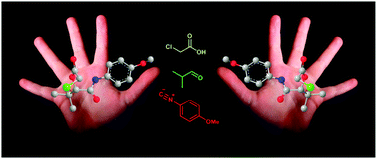Recent developments in asymmetric multicomponent reactions
Abstract
Multicomponent reactions (MCRs) receive increasing attention because they address both diversity and complexity in organic synthesis. Thus, in principle diverse sets of relatively complex structures can be generated from simple starting materials in a single reaction step. The ever increasing need for optically pure compounds for pharmaceutical and agricultural applications as well as for catalysis promotes the development of asymmetric multicomponent reactions. In recent years, asymmetric multicomponent reactions have been applied to the total synthesis of various enantiopure natural products and commercial drugs, reducing the number of required reaction steps significantly. Although many developments in diastereoselective MCRs have been reported, the field of catalytic enantioselective MCRs has just started to blossom. This critical review describes developments in both diastereoselective and catalytic enantioselective multicomponent reactions since 2004. Significantly broadened scopes, new techniques, more environmentally benign methods and entirely novel MCRs reflect the increasingly inventive paths that synthetic chemist follow in this field. Until recently, enantioselective transition metal-catalyzed MCRs represented the majority of catalytic enantioselective MCRs. However, metal contamination is highly undesirable for drug synthesis. The emergence of organocatalysis greatly influences the quest for new asymmetric MCRs.


 Please wait while we load your content...
Please wait while we load your content...